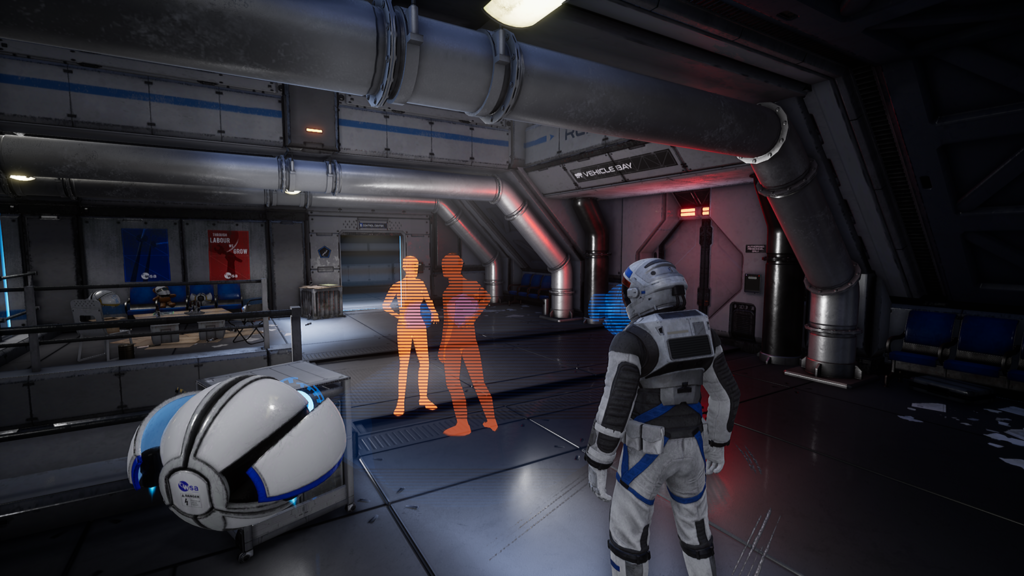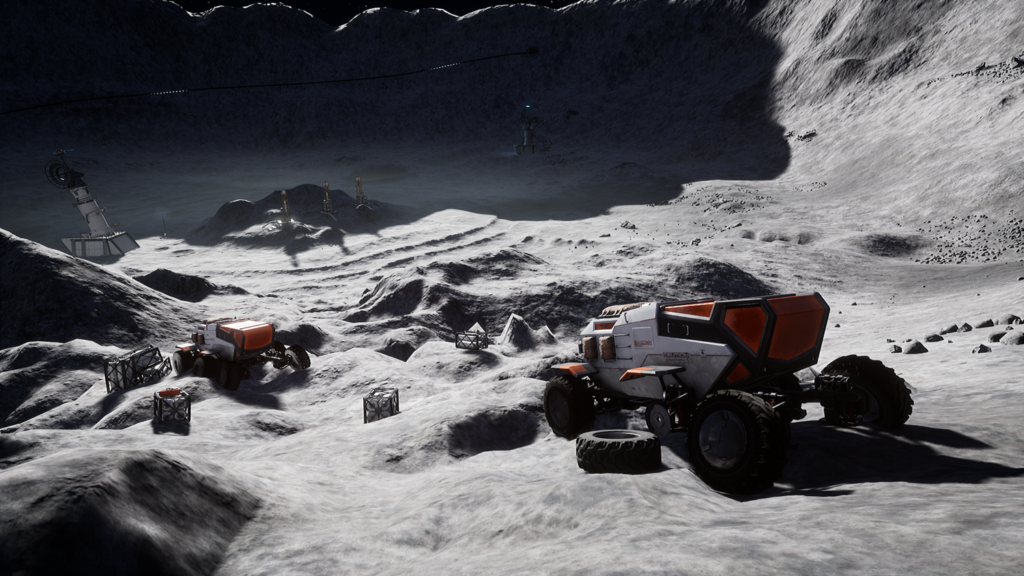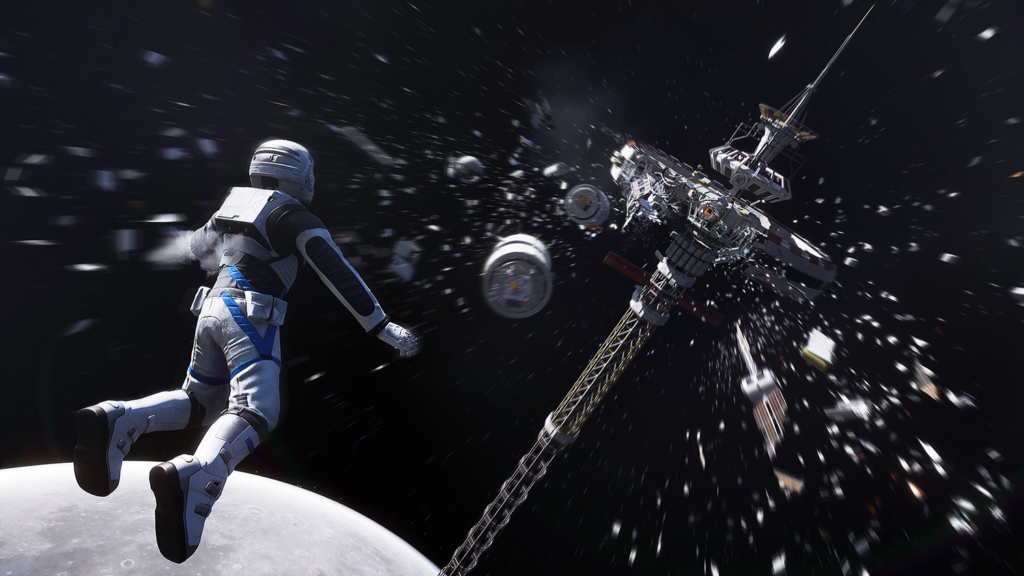
When I was a kid, I got to watch a space shuttle launch from three miles away. It’s the closest you can be. I got to do it a few times, but the one I remember most was a night launch. It was a cold night and the wait was a long one, but you forgot all about that when it happened. It was like watching the sun come up. For as far as you could see, there was light. And then, a couple minutes later, the sound hit you. The roar of the shuttle’s engines, so impossibly loud, and still delayed by the differences between the speed of light and sound. Watching it, hearing it, you’d believe we could accomplish anything.
I also remember watching the space shuttle Columbia disintegrate on re-entry from my backyard because a piece of insulating foam came off during flight and damaged its left wing. It was a sobering reminder of how dangerous space travel is. Whatever we’ve achieved, whatever we’ve managed to build, came at a cost. Challenger. Columbia. Apollo 1. Space is incredible. It is also terrifying. A single mistake can be fatal.
"Your first task is to launch your rocket. Despite the importance of your mission, you’re alone, save for the voices of the scientists telling you what to do via radio."
Deliver Us The Moon understands that, and captures both the awe and terror of traveling in an empty, airless blackness. The year is 2030, and human society on Earth teeters on the brink of collapse. The planet’s natural resources are depleted, and climate changed has ravaged what remains. Nearly the entire planet is covered in either desert or ocean. Humanity forms the World Space Agency to search for answers. They find them on the moon in the form of Helium-3, a potent new form of energy. The WSA colonizes the moon in 2032 and begins harvesting it. The resulting energy is transported to Earth by the Microwave Power Transmission (MPT), a big laser beam that somehow transmits energy via satellite. The whole thing seems a little ridiculous, but it works.
Then, in 2054, transmissions from the MPT stop, and contact with the lunar colonies is lost. Unable to mount a rescue mission for lack of resources, the WSA is shut down in 2055. However, a small group of scientists refuses to give up hope and manages to build a rocket ship in an abandoned facility. By 2059, they are ready to launch an astronaut (you) to the moon. Your mission is clear: get the MPT back online and figure out what happened to the colonies.
Your first task is to launch your rocket. Despite the importance of your mission, you’re alone, save for the voices of the scientists telling you what to do via radio. You’ll turn off the fuel pumps, find access codes to open doors, fix things that break (or figure out how to get around them), and collect bits of history scattered throughout the world that tell you what’s going on, and finally, launch the rocket itself. This sets the tone for most of the game. Deliver Us The Moon is largely a game about exploration, and fixing the problems that crop up as you try to progress. There’s no one else on the mission, so everything is up to you.
"ASE can go into small spaces, like air ducts, that you can’t; work switches that open doors or turn things off and on; replay holograms recorded by the moon’s previous inhabitants; and even scout out areas for you, alerting you to potential threats before they put your astronaut at risk."
Once you get to the moon, you gain access to a small robot named ASE. ASE is exceptionally useful: it can go into small spaces, like air ducts, that you can’t; work switches that open doors or turn things off and on; replay holograms recorded by the moon’s previous inhabitants; and even scout out areas for you, alerting you to potential threats before they put your astronaut at risk. When you’re not controlling ASE, it’ll follow you around, providing an extra light source unless you maneuver it somewhere far away from you, in which case he will stay there. ASE is a helpful little robot, and it has enough of a personality to be endearing, but its presence doesn’t change the fact that you’re utterly alone, a fact Deliver Us The Moon drives home early and often.
Exploring environments often feels like walking through a tomb. You’ll see remnants of the people that lived in these lunar colonies: discarded magazines, notes, datapads, food, and little personal touches like art or communal spaces. One of my favorites was a small voting booth to determine what film was going to be shown for movie night. These places feel lived in, even if they are crumbling from disuse. The game does most of its storytelling through its environment, and all of the usual suspects are here: audio logs, emails, notes, schematics for parts of the station, discarded items you can scan for info, etc and most of it is pretty effective.
The best part of Deliver Us The Moon’s story isn’t its science, which is often handwaved to allow the developers to tell the story they want (see: the MPT, launching a rocket by yourself). Hell, there are even bits of the larger plot that don’t make logistical sense. But the human stuff here works, and you care about the characters whose stories you discover, even though you never meet them, whether they’re scientists struggling with family relationships, or the original group that got sent to fix the MPT and failed. Developer Keoken never loses sight of the people at the center of this story, and when the emotional points hit, and several of them do, it is because of that.
"There are several excellent moments: launching your rocket, docking with a space station, driving a moon rover, exploring areas while managing a limited oxygen supply. But there’s also a lot of repetition."
Where the game struggles most is its gameplay. There are several excellent moments: launching your rocket, docking with a space station, driving a moon rover, exploring areas while managing a limited oxygen supply. But there’s also a lot of repetition. Aside from the hologram recordings, which is a novel way to deliver cinematics, you’ve seen all of the game’s storytelling techniques, and the gameplay elements they allow for, before. Locked out of a room? Guess you’d better find a code, which is naturally written down on a sticky note somewhere. Can’t reach somewhere? You’d better move something to jump on, or send ASE through a duct. These are common tropes, but they can get a bit old when they’re repeated ad nauseum, which Deliver Us The Moon tends to do.
By far the worst part of the game is the need to power everything. It makes sense: things need power, and the colonies are running on fumes. But having to transport so many portable batteries is tiresome, especially when you have to use one to power another area so you can get yet another battery. The other major problem is how often things break. Again, this makes sense: these places have been abandoned for several years and stuff breaks, even when it’s well-maintained. You wouldn’t stick a car in a garage for five years and expect it to run. But I can’t count how many times I fixed something only to have the game tell me I now had to fix something else before I could go where fixing the original thing was supposed to get me. This is compounded by the fact that you’ll often have to do the same things you just did.
An example: before your ASE will work, you have to fix it, which involves finding repair parts scattered around the environment you’re in, and placing them in the ASE properly. The first time, that was fine, and even fun. But when I finished, the game informed me that I also needed to fix something else which involved, you guessed it, finding more repair parts scattered around the exact same environment and placing them in the ASE. I didn’t even get to go to a new area! The game pulls this trick often enough that it’s no longer novel, and whatever surprise there is the first few times wears off quickly. And don’t get me started on how many times fixing one thing broke something else. Often, there are plot reasons for this, and many of them end up being very clever, but still.
"While you mostly play in third-person, one segment, which you spend in zero-g, is in first-person, and is quite different from the rest of the game. It’s a nice change of pace and contains a few of the most memorable moments."
That said, the game does vary things up. While you mostly play in third-person, one segment, which you spend in zero-g, is in first-person, and is quite different from the rest of the game. It’s a nice change of pace and contains a few of the most memorable moments. The only issue is that you often feel like you’re controlling a camera, not a full body, which is a bit distracting. But overall it works well, and since it’s only used once, it doesn’t wear out its welcome.
If I sound harsh about my time with Deliver Us The Moon, I don’t mean to. I genuinely enjoyed the game’s story, despite some of the leaps of logistical logic, and many of the levels are very good, especially the later ones. At it’s best, the game is a lonely, melancholy adventure where every little success feels like a hard-earned victory. This is buoyed by the excellent visual design and stellar soundtrack, which alternates between foreboding, lonely, beautiful, and triumphant. The story-telling was good enough that I went out of my way to collect everything, and the ending is both surprising and touching.
The bits that don’t work only stand out because so much of it works so well. The game has a few technical errors (sometimes textures don’t load properly, and the game freaked so badly during a pivotal emotional moment that I could barely tell what was going on). Sure, there’s some annoying gameplay segments, none of this is particularly new, and one big reveal about a character’s identity works on an awful lot of coincidences, but when Deliver Us The Moon works, it soars. It’s the most basic moments: figuring out a puzzle, finding an oxygen canister just as your air is about to run out, driving your lunar rover across the moon’s surface, or launching your rocket. They’re what’ll keep you going, and believe me, they’re more than worth it.
"Like our history of space travel, the game has its moments of triumph and failure, though the stakes here are thankfully much lower."
Deliver Us The Moon isn’t a long game. It has six levels that you can return to at chapter select once you finish them, and you’ll finish it in six to eight hours if you want to find everything. The game sets itself up for a possible sequel (which I hope we’ll get) while functioning as a standalone game that ends very well. For all its promise, which is substantial, Deliver Us The Moon isn’t perfect. Like our history of space travel, the game has its moments of triumph and failure, though the stakes here are thankfully much lower.
But at its best, it reminds us why we dare to look at the stars and dream about what’s out there. Keoken is fascinated with space, and that love shows. But it never overshadows the studio’s love for its characters. The universe is vast, and all we know is on this this little blue marble. In the end, we’re all we’ve got. Deliver Us The Moon has its eyes on the stars, but it never forgets that its heart is the people traveling them. And in the end, that’s its greatest triumph.
This game was reviewed on Xbox One.
Driving the moon rover. The zero-g segments. The story and characters. ASE is charming and helpful. Cool environments. Doesn't overstay its welcome. Incredible soundtrack. Looks good.
Puzzles can be repetitive. Leaps of logic that don't make sense. Absolutely everything breaks all the time. Visual issues.




















